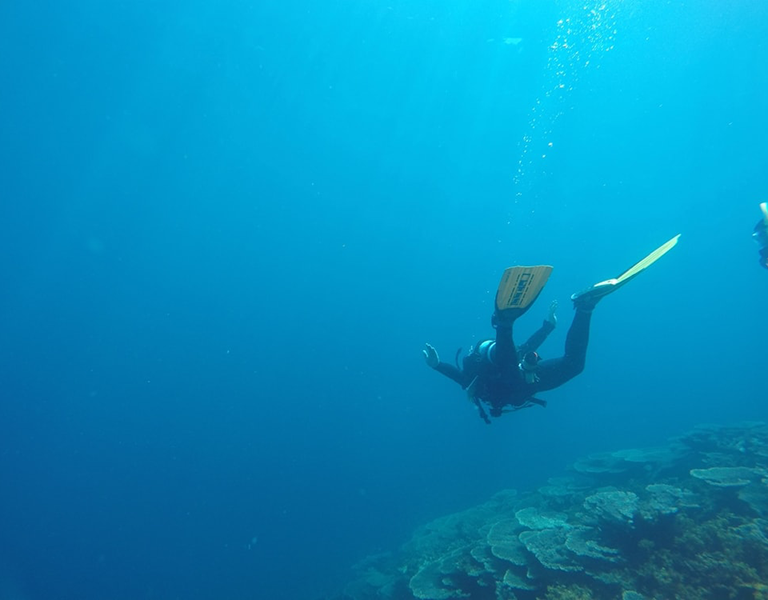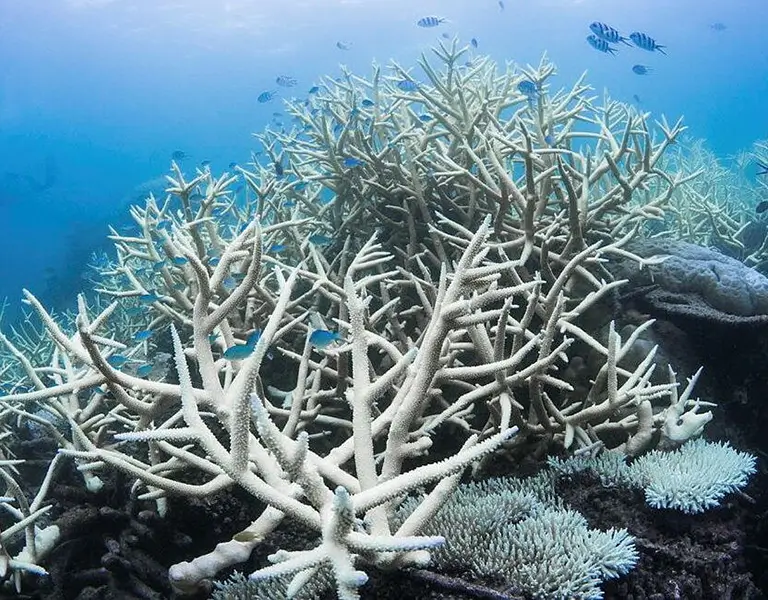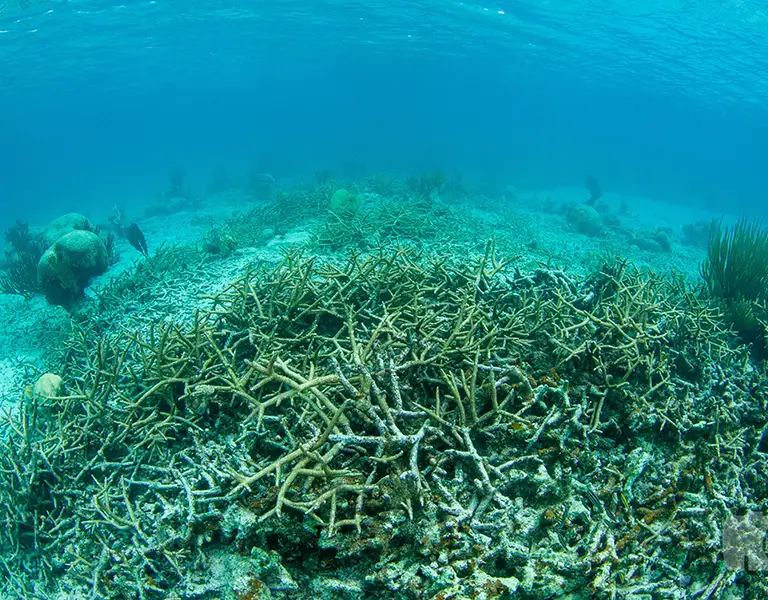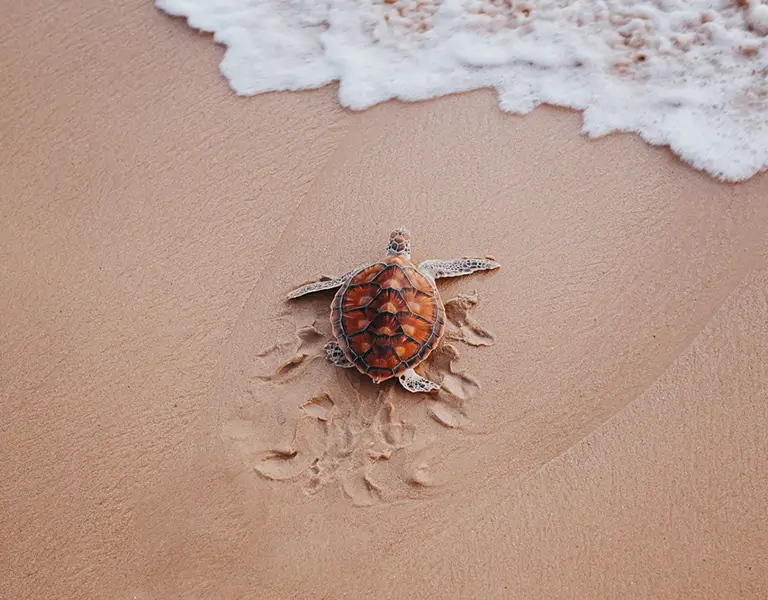Coral reefs represent some of Earth’s most extraordinary and vital ecosystems, supporting an incredible 25% of all marine species despite covering less than 1% of the ocean floor. These underwater rainforests face unprecedented challenges from climate change and human activities, making understanding and protecting them more critical than ever. Recent scientific research reveals both alarming threats and inspiring innovations in coral reef restoration that offer hope for these magnificent marine ecosystems.
Key Takeaways
- Coral reefs support extraordinary biodiversity – housing over 25% of marine species while covering less than 1% of the ocean floor, making them among Earth’s most productive ecosystems
- Climate change poses the greatest threat – with 84% of the world’s corals affected by the largest bleaching event on record from 2023-2025, demonstrating the urgent need for action
- Economic value is immense – corals provide over $3.4 billion annually to the U.S. economy alone and support one billion people globally through tourism, fisheries, and coastal protection
- Innovation offers hope – new restoration techniques like land-based coral farming and assisted evolution are accelerating coral growth up to 50 times faster than natural rates
- Community action is essential – protecting corals requires coordinated efforts addressing both global climate change and local threats like pollution and overfishing
Understanding Coral Reefs: Nature’s Underwater Cities
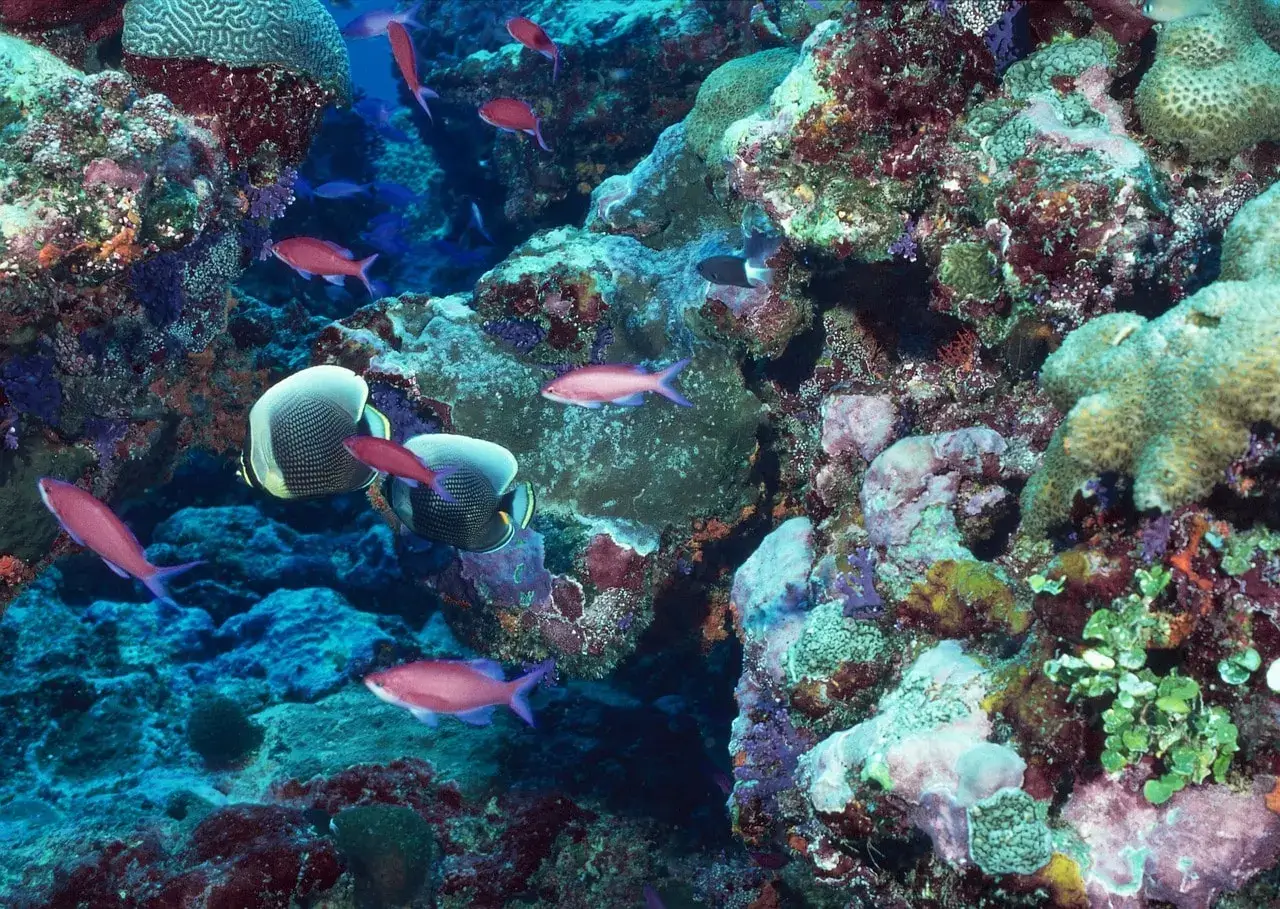
What Are Coral Reefs?
Coral reefs form through the remarkable partnership between tiny marine animals called coral polyps and microscopic algae known as zooxanthellae. These coral polyps, no larger than a few millimeters, create the foundation for entire marine ecosystems through their unique ability to extract calcium and carbonate ions from seawater and transform them into solid calcium carbonate structures.
The process begins when individual coral polyps secrete layers of calcium carbonate beneath their soft bodies, creating hard skeletons that serve as both protection and foundation for future generations. Over time, as millions of these coral polyps live, die, and build upon each other’s skeletons, massive reef structures emerge from the ocean bed.
This symbiotic relationship between coral polyps and algae proves essential for healthy corals. The Microalgae provide food and oxygen to their coral hosts through photosynthesis, while corals offer protection and nutrients to the algae. This partnership enables corals to thrive in the nutrient-poor tropical waters where most corals are found.
The Science Behind Coral Reef Formation
Reef building corals demonstrate nature’s incredible engineering capabilities through biomineralization – the process by which living organisms create mineral structures. When coral polyps extract calcium carbonate from seawater, they essentially transform dissolved minerals into solid building materials, creating structures that can withstand powerful ocean currents and storms.
Hard corals grow remarkably slowly under natural conditions, with massive coral species adding only 1-2 centimeters per year to their calcium carbonate skeletons1‘2. Branching coral species grow faster, achieving growth rates of 10-20 centimeters annually3‘4‘5, but even these rapid growers require decades to establish substantial reef structures.
The calcium carbonate skeletons that coral polyps create consist primarily of aragonite crystals, arranged in complex bundles that provide both strength and flexibility. These crystalline structures allow coral reefs to absorb up to 97% of wave energy6‘7‘8, making them natural barriers that protect coastlines from erosion and storm damage.
Modern coral reef systems, including Australia’s Great Barrier Reef, began forming approximately 6,000-9,000 years ago as sea levels stabilized following the last ice age9‘10‘11. However, many coral species trace their evolutionary history back millions of years, representing some of Earth’s most ancient and resilient ecosystems.
Types of Coral Reef Ecosystems
Fringing Reefs
Fringing reefs develop closest to shorelines in shallow waters, typically extending directly from tropical coastlines. These coral reef ecosystems often form in depths shallower than 30 meters, where sufficient sunlight penetrates to support the photosynthetic needs of zooxanthellae algae12‘13‘14.
The shallow waters of fringing reefs create ideal conditions for many coral species while also making these ecosystems particularly vulnerable to land-based pollution and coastal development. Sediment runoff from agricultural activities and urban development can smother coral polyps and block the sunlight essential for coral growth.
Barrier Reefs
Barrier reefs, exemplified by Australia’s Great Barrier Reef, form parallel to coastlines but separated by deeper lagoons. These massive reef structures can extend for thousands of kilometers, creating complex marine ecosystems that support incredible biodiversity.
The Great Barrier Reef demonstrates the extraordinary scale possible for barrier reef systems, stretching over 2,300 kilometers along Australia’s northeast coast. This World Heritage site encompasses approximately 2,900 individual coral reefs and supports over 9,000 marine species15.
Atoll Reefs
Atoll reefs form circular or oval-shaped structures surrounding central lagoons, typically developing around slowly subsiding volcanic islands. As volcanic island subsides over geological time, coral reefs grow upward toward sunlight, eventually forming ring-shaped structures when the original island disappears completely beneath the ocean surface.
French Frigate Shoals in the South Pacific exemplify classic atoll reef formation, where coral growth has kept pace with volcanic island subsidence over millions of years. These unique coral reef ecosystems create protected central lagoon areas that serve as nurseries for juvenile marine species.
Marine Life: The Incredible Biodiversity of Coral Reefs
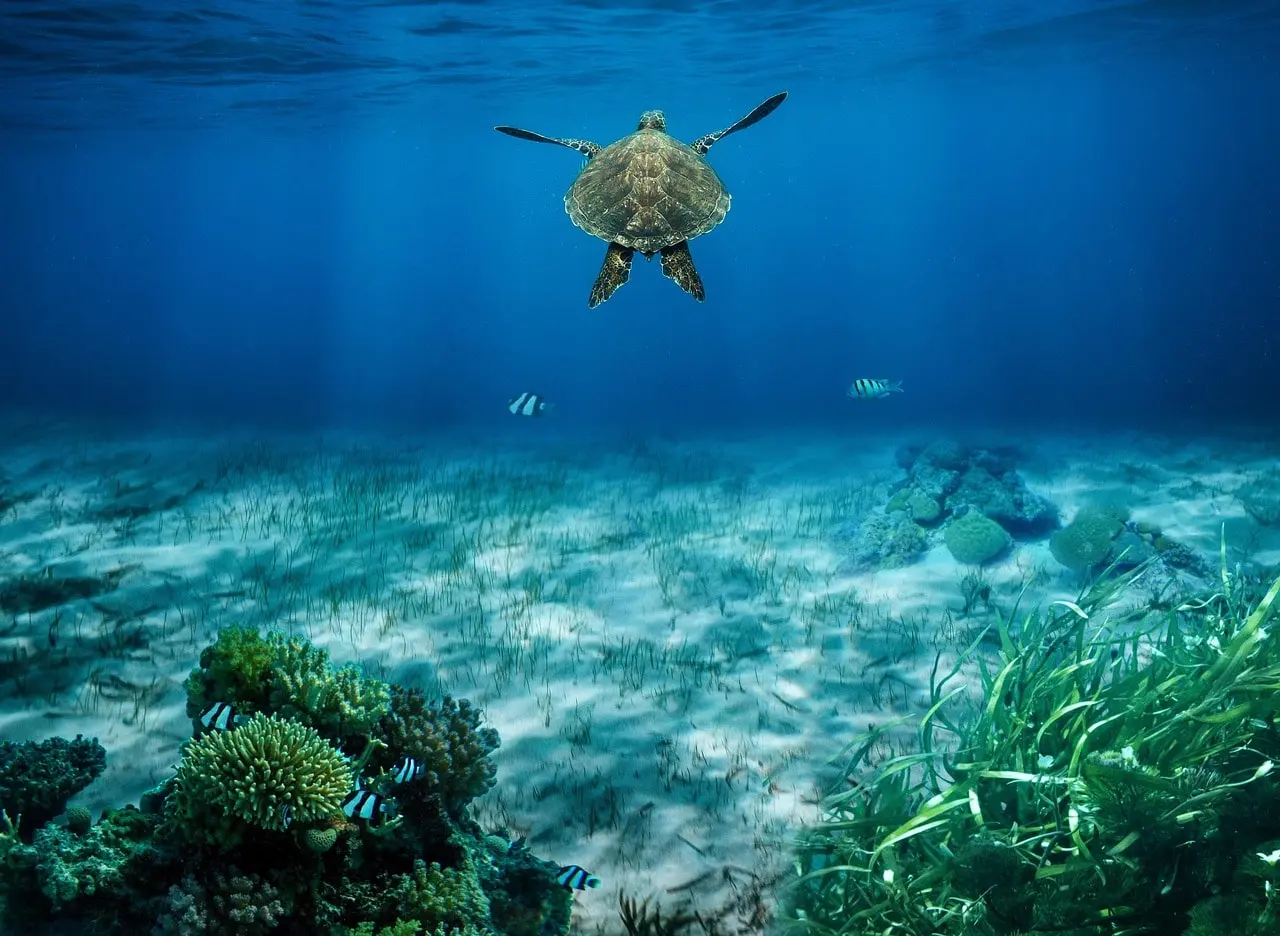
Fish Communities in Coral Reef Ecosystems
Coral reefs support an astounding diversity of marine species, with over 1,625 fish species documented in the Great Barrier Reef alone16. This remarkable fish diversity spans 13 major taxonomic groups, from tiny gobies measuring just centimeters to massive groupers exceeding two meters in length17.
Angelfish represent one of the most colorful groups, with approximately 80 species inhabiting various reef depths18. These vibrant fish species play crucial roles in coral reef food webs, with many species feeding on algae that could otherwise overgrow and smother living corals.
Parrotfish demonstrate nature’s remarkable specialization, using their beak-like mouths to scrape algae and small coral polyps from reef surfaces. Giant parrotfish can consume over 5 tonnes of coral reef material annually, with their digestive processes producing the fine sand that forms many tropical beaches.
Clownfish, made famous through popular culture, exemplify the intricate relationships that define coralline ecosystems. These marine species live in symbiotic relationships with sea anemones, receiving protection from predators while providing cleaning services and nutrients to their hosts.
Marine Mammals and Reptiles
Sea Turtles
Six of the world’s seven marine turtle species inhabit coralline ecosystems, making these areas critical for sea turtle conservation. Green sea turtles rely heavily on sea grass beds associated with coral reefs for feeding, while hawksbill turtles feed directly on coral polyps and sponges.
Coral reefs provide essential nesting beaches for marine turtles, with many coral reef regions serving as critical habitat for threatened and endangered marine animals. The loss of coralline ecosystems directly impacts sea turtle survival and recovery efforts.
Marine Mammals
Over 30 species of whales and dolphins utilize coral reef waters, with humpback whales migrating thousands of kilometers to reach the protected waters around major reef systems. The Great Barrier Reef serves as crucial calving grounds for humpback whales during their annual migration.
Dugongs, often called sea cows, represent one of the most endangered marine species associated with coral reefs. These marine mammals feed primarily on seagrass beds found in coral reef lagoons and depend entirely on healthy coastal ecosystems for survival.
Invertebrate Diversity
Coralline ecosystems support an estimated 4,000 mollusk species, ranging from tiny snails to giant clams weighing over 200 kilograms19. These diverse ecosystems also harbor approximately 300 echinoderm species, including sea urchins, sea stars, and sea cucumbers that play vital roles in reef ecology.
Sea urchins serve as important herbivores in coralline ecosystems, helping control algae growth that might otherwise compete with corals for space and light. However, population explosions of certain sea urchin species can also damage coral reefs through excessive grazing.
Sponge communities contribute significantly to coral reef biodiversity, with over 2,000 sponge species documented in major reef systems. These filter-feeding organisms process enormous quantities of seawater daily, helping maintain water quality essential for coral health.
Coral Disease and Health Challenges
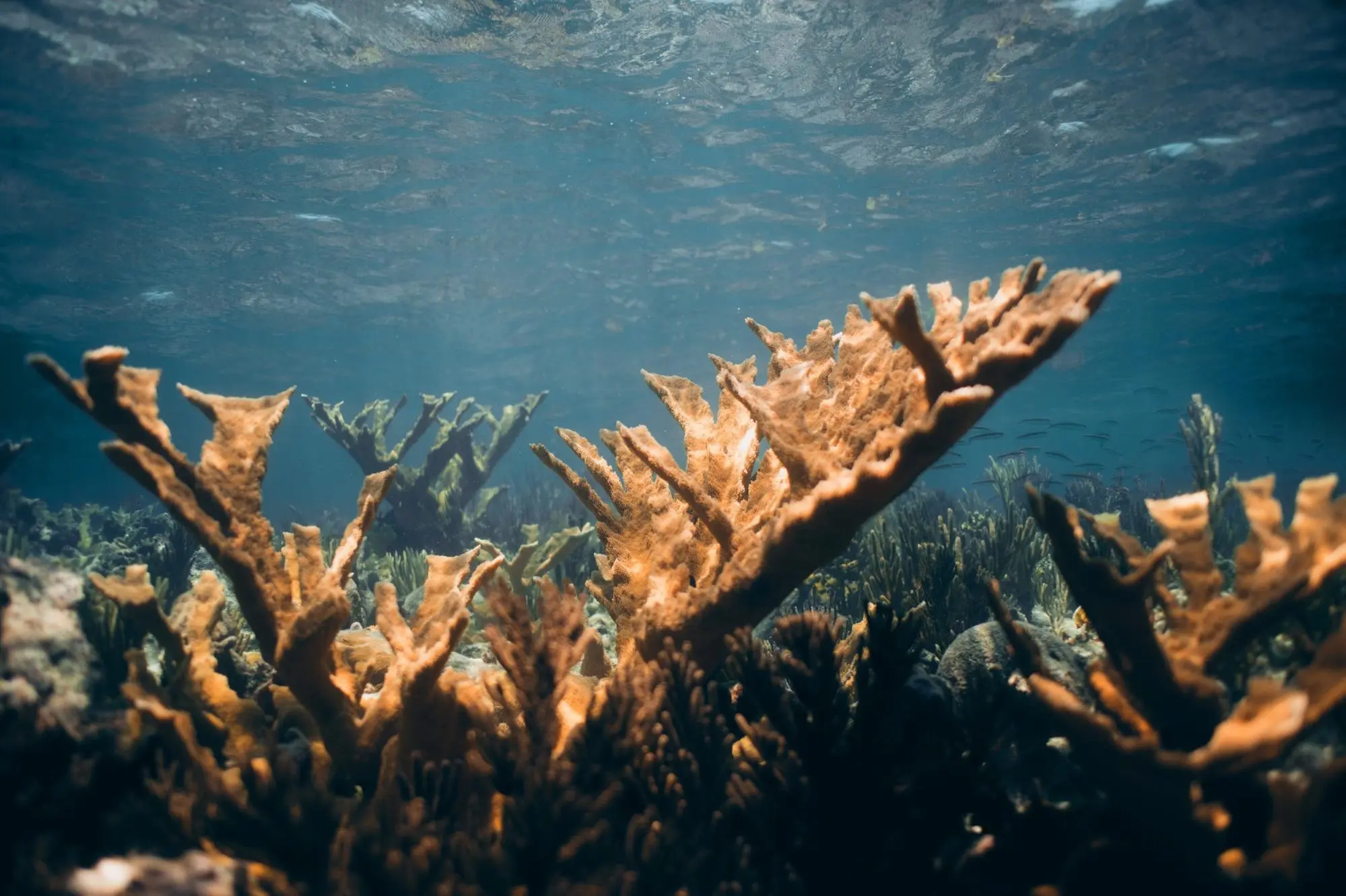
Understanding Coral Bleaching
Coral bleaching occurs when increasing ocean temperatures force coral polyps to expel their symbiotic zooxanthellae algae, causing corals to appear white or “bleached.” This stress response represents one of the most visible signs of coral reef ecosystem decline.
The fourth global coral bleaching incidents, ongoing since 2023, has affected an unprecedented 84% of the world’s coral reefs20. This massive bleaching incidents demonstrates the accelerating impact of climate crisis on marine ecosystems worldwide.
When water temperatures exceed normal ranges by just 1-2 degrees Celsius for extended periods, coral polyps cannot maintain their symbiotic relationships with algae21. Without these algae provide nutrients through photosynthesis, corals begin to starve and may die within weeks or months.
Bleaching incidents have become increasingly frequent and severe, with many coral reefs experiencing multiple bleaching episodes before fully recovering from previous events. This pattern prevents coral reefs from building the resilience necessary to survive future climate impacts.
Coral Disease Outbreaks
Stony Coral Tissue Loss Disease represents one of the most devastating coral diseases currently spreading through Caribbean coral reefs. First observed in 2014, this coral disease spreads at rates exceeding 155 meters per day, causing rapid mortality in affected coral colonies22.
Unlike coral bleaching, which corals can potentially survive, Stony Coral Tissue Loss Disease causes permanent tissue death and typically proves fatal to infected corals. The disease affects over 20 coral species and has already caused significant mortality throughout the western Caribbean23.
Skeletal Eroding Band disease, caused by the protozoan Halofolliculina corallasia, affects 31 different coral species and demonstrates how pathogens can devastate coralline ecosystems24. These diseases often spread more rapidly in coral reefs already stressed by warming ocean temperatures and poor water quality.
White Syndrome diseases encompass several related conditions that cause tissue death in coral colonies, often spreading rapidly through reef systems. Scientists continue researching the causes and potential treatments for these emerging coral diseases25.
Threats to Coral Reefs
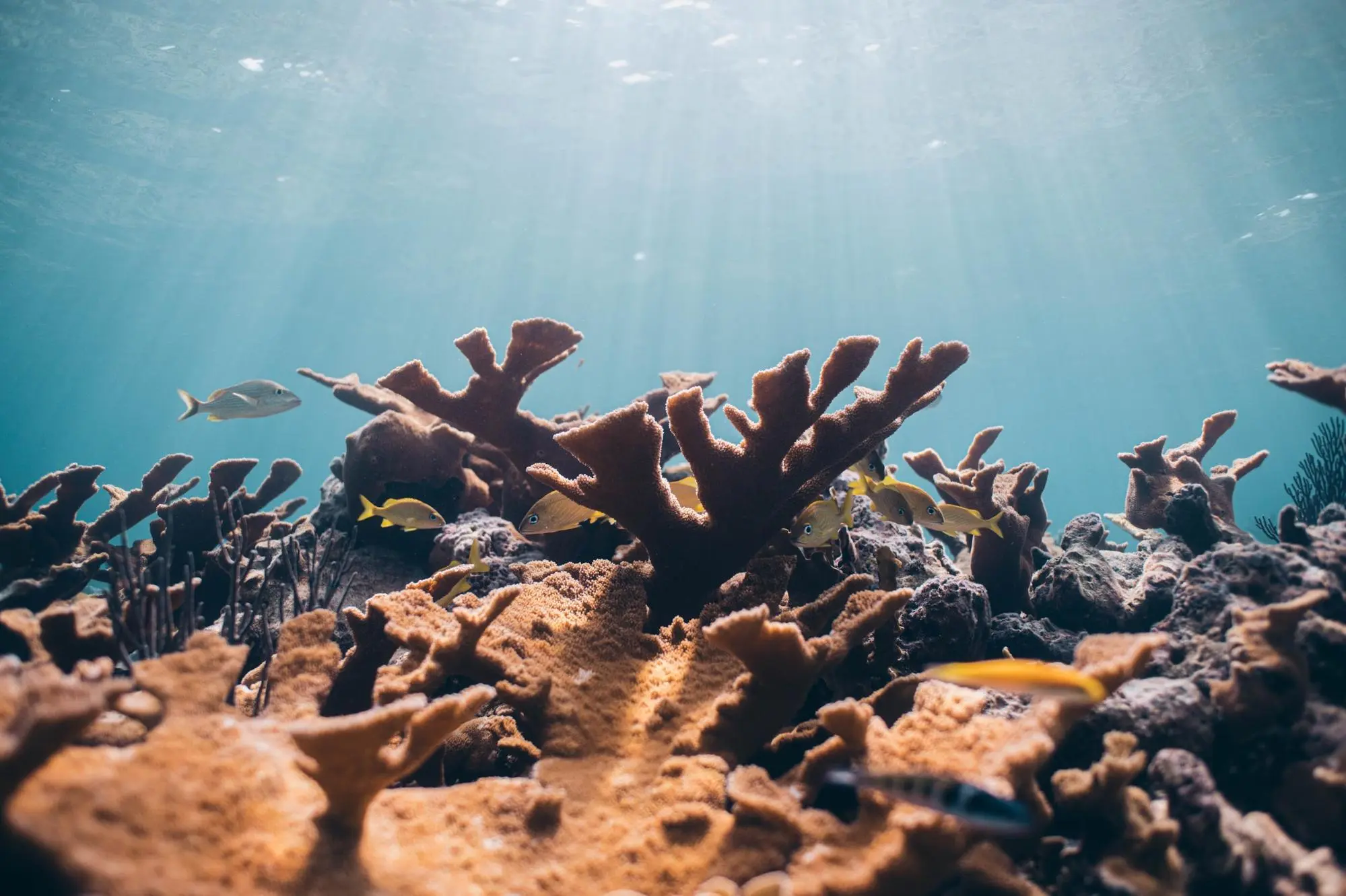
Climate Change Impacts
Rising Ocean Temperatures
Climate change represents the greatest threat to coral reefs globally, with increasing ocean temperatures driving widespread coral bleaching events. Each of the past eight years has established new records for ocean heat content, with 2024 representing the highest ocean temperatures in 65 years of observational records26.
The rate of ocean warming has more than doubled since 2005, creating conditions that exceed the thermal tolerance of most coral species27. Coral reefs evolved in stable tropical environments and cannot adapt quickly enough to match the pace of current climate crisis.
Mass coral bleaching events now occur with increasing frequency, preventing coral reefs from recovering between disturbances. Where coral reefs historically experienced bleaching events every 25-30 years, many reef systems now face bleaching conditions every 3-6 years28.
Ocean Acidification
Rising carbon dioxide levels in Earth’s atmosphere lead directly to ocean acidification as seawater absorbs excess CO2. This process lowers ocean pH and reduces the availability of carbonate ions that coral polyps need to build their CaCO₃ skeletons.
Ocean acidification makes it increasingly difficult for reef building corals to construct and maintain their skeletal structures. In severely acidic conditions, existing coral skeletons may actually begin dissolving, reversing millions of years of reef construction.
The combination of warming ocean temperatures and acidification creates a double threat to coralline ecosystems. While rising temperatures cause coral bleaching, acidification undermines the fundamental biological processes that enable coral reef formation.
Local Threats to Coral Reefs
Water Quality and Pollution
Poor water quality from agricultural runoff represents a major local threat to coral reef health. Fertilizer applications release nitrogen, phosphorus, and potassium into oceanic ecosystems, causing massive algal growth that competes with corals for space and light.
Coastal erosion and sedimentation can smother coral polyps and block the sunlight essential for photosynthesis. Construction activities, coastal development, and poor land management practices all contribute to increased sedimentation in coral reef waters.
Chemical pollution from industrial activities, sewage discharge, and plastic debris creates additional stress for coral reef organisms. Heavy metals, pesticides, and other toxins accumulate in coral tissues and can disrupt the symbiotic relationships essential for coral survival.
Physical Damage
Destructive fishing practices, including dynamite fishing and cyanide use, cause immediate and severe damage to coral reef structures. These methods destroy decades of coral growth in minutes and eliminate the three-dimensional habitat structure that supports reef biodiversity.
Ship groundings and anchor damage represent significant threats to coral reefs, particularly in areas with heavy maritime traffic. A single large vessel grounding can destroy centuries of calcification across hectares of reef habitat.
Tourism pressure, while economically important, can damage coral reefs through physical contact, boat anchoring, and increased sedimentation from coastal development. Sustainable eco-tourism practices are essential for balancing economic benefits with reef protection.
Coral Reef Conservation and Restoration

Innovative Restoration Techniques
Land-Based Coral Farming
Revolutionary land-based coral farming techniques are transforming coral restoration possibilities by growing corals in controlled terrestrial environments. These facilities protect developing corals from ocean-based threats while accelerating growth rates up to 50 times faster than natural conditions29.
Land-based coral farms enable precise control of water temperature, pH, lighting, and nutrient levels to optimize calcification and health. This controlled environment allows researchers to expose corals gradually to higher temperatures and acidity levels, helping them adapt to future ocean conditions.
Microfragmentation and fusion techniques used in land-based coral farms can accelerate the growth of slow-growing massive coral species. By cutting corals into small fragments and allowing them to fuse together, scientists can achieve months of growth that would typically require decades in natural conditions.
These innovative approaches combine cutting-edge technology with proven biological principles to scale coral production for large-scale reef restoration. Computer vision and machine learning systems help optimize coral genetics and monitor growth rates in real-time.
Assisted Evolution
Assisted evolution techniques help coral populations develop greater resilience to climate crisis impacts by enhancing their natural adaptive capabilities. Scientists expose coral colonies to gradually increasing temperature and acidity levels, selecting individuals that demonstrate superior stress tolerance.
Selective breeding programs focus on identifying coral genotypes with natural resistance to bleaching, disease, and other stressors. These resilient corals serve as parent colonies for restoration projects, potentially improving the survival rates of outplanted corals.
Coral probiotics represent an emerging field where beneficial bacteria are used to enhance coral health and disease resistance. These microscopic organisms can help corals better cope with environmental stressors and resist pathogenic infections.
Symbiodinium research focuses on identifying heat-tolerant algae strains that can maintain symbiotic relationships with corals at higher temperatures. By introducing these resilient algae to coral colonies, scientists hope to increase overall thermal tolerance.
Community-Based Conservation
Traditional Ecological Knowledge
Indigenous communities throughout the tropics have managed coral reef resources sustainably for thousands of years, developing sophisticated understanding of reef ecology and conservation practices. Traditional Use of Marine Resource Agreements recognize and incorporate this valuable knowledge into modern reef management.
Local communities often serve as the most effective guardians of coralline ecosystems, having direct stakes in maintaining healthy reefs for fishing, tourism, and cultural practices. Community-based management programs consistently demonstrate higher success rates than top-down conservation approaches.
Cultural connections to coral reefs provide powerful motivation for conservation action, with many communities viewing reefs as sacred spaces that require protection for future generations. These cultural values align perfectly with scientific conservation goals.
Marine Protected Areas
Well-designed marine protected areas serve as essential refuges for coralline ecosystems, providing protection from fishing pressure, boat damage, and other human impacts. No-take zones allow fish populations to recover and grow larger, improving reef resilience to climate impacts.
Successful marine protected areas require strong community support and effective enforcement to achieve conservation goals. Local fishing communities must see tangible benefits from protection measures to support long-term conservation efforts.
Connectivity between protected areas enables fish and coral larvae to move between reef systems, supporting genetic diversity and population recovery. Networks of marine protected areas prove more effective than isolated protection zones.
Economic and Social Importance of Coral Reefs

Economic Value of Coral Reef Ecosystems
Coral reefs generate enormous economic value through multiple pathways, contributing over $3.4 billion annually to the U.S. economy alone. Globally, coral reef ecosystem services provide an estimated $9.9 trillion in annual value, supporting approximately one billion people worldwide30.
Tourism represents the largest economic sector dependent on coral reefs, generating over $9.6 billion annually in global revenue31. Coral reef destinations attract millions of visitors each year who come to experience these underwater wonders through diving, snorkeling, and boat tours.
Commercial and recreational fisheries dependent on coral reefs contribute approximately $5.7 billion annually to the global economy32. Coral reefs serve as nursery areas for many commercially important fish species, supporting both local subsistence fishing and large-scale commercial operations.
Coastal protection services provided by coral reefs prevent an estimated $1.8 billion in annual property damage in the United States alone33. Healthy coral reefs can absorb up to 97% of wave energy, protecting shorelines from erosion and storm surge during hurricanes and tropical storms.
Supporting Coastal Communities
Coral reefs provide essential protein sources for hundreds of millions of people worldwide, particularly in developing island nations where fishing represents the primary source of animal protein. Reef fisheries support both subsistence and commercial fishing operations that sustain entire communities.
Many coastal communities depend directly on coral reef tourism for employment and income generation. From dive guides and boat operators to hotel staff and restaurant workers, reef tourism creates diverse economic opportunities in coastal areas.
Traditional medicine derived from coral reef organisms provides important healthcare resources for many tropical communities. Coral reefs contain compounds currently being researched for treating cancer, HIV, and other serious medical conditions.
Cultural and spiritual connections to coral reefs provide intangible but essential values for many indigenous and traditional communities. These relationships span generations and form integral parts of cultural identity and traditional knowledge systems.
Protecting Coral Reefs: Global and Local Actions
International Conservation Efforts
The United Nations Framework Convention on Climate crisis recognizes coral reefs as particularly vulnerable ecosystems requiring urgent protection. International climate agreements increasingly acknowledge the need for rapid decarbonization to preserve coralline ecosystems.
The Convention on Biological Diversity established targets for protecting 30% of marine areas by 2030, with coral reefs identified as priority ecosystems for conservation action34. This global framework provides structure for coordinated international reef protection efforts.
The International Coral Reef Initiative facilitates collaboration between governments, scientists, and conservation organizations working to protect coral reefs worldwide. This partnership approach enables sharing of best practices and coordination of restoration efforts across reef regions.
Regional fisheries management organizations work to reduce fishing pressure on coralline ecosystems through sustainable catch limits and gear restrictions. These efforts help maintain the ecological balance essential for reef health and resilience.
Individual Actions to Protect Coral Reefs
Sustainable Tourism Practices
Reef-safe sunscreen use helps reduce chemical pollution in coral reef waters by avoiding ingredients like oxybenzone and octinoxate that can cause coral bleaching. Many coral reef destinations now promote or require reef-safe products to protect their marine ecosystems.
Responsible diving and snorkeling practices prevent physical damage to coral colonies through proper buoyancy control and avoiding contact with reef structures. Even gentle touching can damage coral polyps and introduce harmful bacteria to coral colonies.
Choosing sustainable tour operators who follow environmental guidelines and contribute to conservation efforts helps ensure that tourism benefits rather than harms coralline ecosystems. Certified eco-tour operators often fund restoration projects and education programs.
Reducing Carbon Footprint
Individual actions to reduce greenhouse gas emissions directly support coral reef conservation by helping limit global warming and ocean acidification. Transportation choices, energy use, and consumption patterns all influence climate crisis impacts on coral reefs.
Supporting renewable energy development and energy efficiency measures helps accelerate the transition away from fossil fuel dependence. These systemic changes provide the only long-term solution for addressing climate threats to coral reefs.
Dietary choices, particularly reducing meat consumption, can significantly lower individual carbon footprints. Agriculture represents a major source of greenhouse gas emissions, and shifting toward plant-based diets helps reduce climate crisis pressures on coral reefs.
Supporting Coral Reef Research and Restoration
Citizen science programs enable individuals to contribute directly to coral reef monitoring and research efforts. Projects like reef health surveys, coral spawning observations, and water quality monitoring provide valuable data for scientists and managers.
Coral adoption programs allow individuals and organizations to directly fund coral restoration efforts by supporting the growth and outplanting of specific coral colonies. These programs often provide updates on coral progress and restoration success.
Educational outreach and advocacy help build public support for coral reef conservation policies and funding. Sharing facts and conservation messages through social media and community presentations amplifies awareness and action.
Deep Sea Corals and Alternative Reef Systems
Exploring Deep Water Coral Ecosystems
Deep sea corals thrive in cold, dark ocean environments far from tropical shallow-water reefs, demonstrating the remarkable adaptability of coral organisms. These deep water systems do not rely on symbiotic algae for nutrition, instead filtering organic matter and small organisms from ocean currents.
Deep sea coral ecosystems support unique marine species assemblages adapted to high-pressure, low-temperature conditions. These coral communities can live for centuries or even millennia, creating complex three-dimensional habitats comparable to shallow coral reefs.
Scientists continue discovering new deep sea coral species and ecosystems, with many areas remaining unexplored. These discoveries expand our understanding of coral diversity and evolution while revealing new conservation challenges and opportunities.
Cold-water corals face threats from deep-sea fishing, oil and gas exploration, and ocean acidification. Protecting these systems requires different approaches than shallow coral reef conservation due to their remote locations and unique characteristics.
Alternative Coral Reef Systems
Temperate corals occur in cooler waters where different coral species create reef structures without relying on symbiotic algae. These systems demonstrate the potential for coral adaptation to various environmental conditions.
Artificial reef structures can support coral recruitment and provide alternative habitat when natural reefs suffer damage. While not replacements for natural marine ridges, artificial substrates can enhance local marine biodiversity and fisheries production.
Coral gardens and restoration nurseries represent managed coral ecosystems designed specifically for conservation purposes. These facilities combine natural processes with human intervention to maximize coral survival and growth.
Innovative Technologies in Coral Reef Science
Advanced Monitoring Systems
Satellite monitoring systems enable scientists to track coral reef health across vast ocean areas, identifying bleaching events and other disturbances in near real-time. These technologies provide early warning systems for reef managers and enable rapid response to emerging threats.
Underwater robotics and autonomous vehicles allow continuous monitoring of coralline ecosystems without human disturbance. These systems can collect data on water quality, coral health, and marine life populations over extended periods.
Environmental DNA sampling techniques enable scientists to identify marine species presence from water samples, providing comprehensive biodiversity assessments without directly observing organisms35. This technology can detect rare species and monitor ecosystem changes over time.
Three-dimensional reef modeling using photogrammetry and sonar mapping creates detailed digital reconstructions of coral reef structures. These models enable precise measurement of calcification, monitoring of structural changes, and virtual reef exploration for research and education.
Biotechnology Applications
Coral cryopreservation techniques enable long-term storage of coral genetic material, creating insurance populations against extinction and providing resources for future restoration efforts. Frozen coral sperm and larvae can remain viable for decades when properly preserved.
Genetic sequencing technologies reveal the molecular mechanisms underlying coral stress tolerance and adaptation, informing selective breeding and assisted evolution programs. Understanding coral genetics enables more targeted and effective restoration approaches.
Coral spawning prediction models help scientists and restoration practitioners anticipate and prepare for natural coral reproduction events. Collecting eggs and sperm during spawning enables sexual propagation techniques that enhance genetic diversity in restoration projects.
Laboratory coral culture systems enable year-round coral propagation independent of natural spawning cycles. These controlled environments allow precise manipulation of growth conditions and enable large-scale coral production for restoration purposes.36
Future Outlook for Coral Reefs
Climate Change Scenarios
Scientific projections indicate that corals will face increasingly severe challenges as marine temperatures continue rising throughout the 21st century. Even under optimistic climate scenarios, corals will experience significant changes and require intensive management to survive.
Limiting global warming to 1.5°C above pre-industrial levels provides the best chance for coral reef survival, though even this scenario will result in substantial coral loss. Higher temperature increases could lead to the functional extinction of most coralline ecosystems.
Ocean chemistry changes will continue affecting coral calcification rates and skeletal integrity regardless of temperature controls. Marine ridges must adapt to more acidic conditions while simultaneously coping with thermal stress and other environmental pressures.
Regional differences in climate impacts will create varying survival prospects for different coral reef systems. Some marine ridges may serve as climate refugia where conditions remain more favorable for coral survival and recovery.
Technological Solutions and Innovations
Emerging restoration technologies offer hope for accelerating coral reef recovery and enhancing climate resilience. Advances in coral breeding, genetic selection, and deployment techniques may enable restoration at previously impossible scales.
Biorock technology uses low-voltage electricity to accelerate CaCO₃ deposition and calcification rates. This technique has shown promise for rapid reef restoration and may enable coral survival in areas where natural recruitment fails.
Coral cloud seeding and larval enhancement programs aim to boost natural coral reproduction and settlement rates. These techniques could supplement natural population recovery and help reestablish coral communities on degraded marine ridges.
Automated coral deployment systems using underwater vehicles and robotics could dramatically reduce the cost and increase the scale of restoration operations. These technologies may enable restoration across entire reef systems rather than small pilot areas.
Building Reef Resilience
Ecosystem-based management approaches integrate coral reef conservation with broader marine and coastal ecosystem protection. This holistic strategy addresses multiple threats simultaneously and enhances overall system resilience.
Reducing local stressors through improved water quality management and fishing regulations helps corals better cope with global climate crisis impacts. Healthy coralline ecosystems demonstrate greater resilience to bleaching and other disturbances.
Genetic diversity conservation through careful management of coral populations and restoration genetics helps maintain adaptive potential for future environmental changes. Diverse coral communities show greater stability and recovery capacity.
Creating networks of protected coral reef areas enables population connectivity and provides refugia for coral recruitment and recovery. These protected systems serve as sources of larvae and adult fish that support broader reef recovery.
Conclusion
Coral reef facts reveal these remarkable ecosystems as Earth’s most biodiverse marine environments, supporting an extraordinary 25% of marine species while facing unprecedented challenges from climate crisis and human activities. The ongoing global coral bleaching event affecting 84% of reefs demonstrates the urgent need for comprehensive action combining global climate solutions with local conservation efforts.
While they face serious threats, innovative restoration techniques and community-based conservation offer genuine hope for reef recovery and resilience. Land-based coral farming, assisted evolution, and collaborative management approaches are showing promising results in rebuilding damaged reef systems and enhancing coral climate tolerance.
The economic value of coralline ecosystems – over $9.9 trillion annually37 – underscores their critical importance for human communities worldwide. From coastal protection and fisheries to tourism and medical discoveries, they provide irreplaceable services that benefit billions of people globally.
Protecting them requires action at every level, from international climate agreements to individual choices about energy use and tourism practices. By understanding facts and supporting science-based conservation efforts, we can help ensure these underwater rainforests continue inspiring and sustaining future generations.
About Coral Vita
Coral Vita is a mission-driven company dedicated to restoring our world’s dying and damaged reefs. Using innovative land-based farming techniques, Coral Vita grows diverse and resilient corals in months instead of the decades they take in nature. These corals are then transplanted into threatened reefs, helping to preserve ocean biodiversity while protecting coastal communities that depend on healthy reefs for protection, food, and income].
Founded by environmental entrepreneurs Sam Teicher and Gator Halpern, Coral Vita’s high-tech coral farms incorporate breakthrough methods to restore reefs in the most effective way possible. In 2021, the company was recognized as the inaugural winner of Prince’s William’s Revive Our Oceans Earthshot Prize Winner for their pioneering work in coral restoration.
To learn more about Coral Vita’s work or to get involved in coral reef conservation efforts, visit their website at www.coralvita.co or contact them directly through their Contact Us page.
FAQ
What are the most important coral reef facts everyone should know?
Coral reefs support 25% of marine animals while covering less than 1% of ocean bed. They provide over $3.4 billion annually to the U.S. economy through fisheries, tourism, and coastal protection services.
How do coral reefs form and grow?
Coral polyps secrete CaCO₃ skeletons that build up over time. These reef building corals grow slowly, with massive species adding 1-2 centimeters annually through continuous CaCO₃ deposition processes.
What are the biggest threats to coral reef ecosystems?
Climate crisis causes coral bleaching and ocean acidification. Local threats include water pollution, coastal development, overfishing, and physical damage from tourism and destructive fishing practices affecting coral health.
How can coral reef restoration help save these ecosystems?
Modern restoration techniques like land-based coral farming and assisted evolution grow corals faster while enhancing climate resilience. These innovations enable large-scale restoration previously impossible with traditional methods.
References
- Florida Fish and Wildlife Conservation Commission. (2016). What are Corals? Retrieved from https://myfwc.com/research/habitat/coral/news-information/what-are-corals/ ↩︎
- NOAA Coral Reef Conservation Program. Coral Facts. Retrieved from https://coralreef.noaa.gov/education/coralfacts.html ↩︎
- U.S. Fish & Wildlife Service. Staghorn Coral (Acropora cervicornis). Retrieved from https://www.fws.gov/species/staghorn-coral-acropora-cervicornis ↩︎
- Henkel, T. P. (2010). Coral Reefs. Nature Education Knowledge 3(10):12 ↩︎
- NOAA National Ocean Service. Corals Tutorial: How Do Coral Reefs Form? Retrieved from https://oceanservice.noaa.gov/education/tutorial_corals/coral04_reefs.html ↩︎
- Ferrario, F., et al. (2014). The effectiveness of coral reefs for coastal hazard risk reduction and adaptation. Nature Communications, 5, 3794. ↩︎
- Beck, M., et al. (2018). The global flood protection savings provided by coral reefs. Nature Communications, 9, 2186. ↩︎
- U.S. Geological Survey. (2014). Coral Reefs are Critical for Risk Reduction & Adaptation. Retrieved from https://www.usgs.gov/news/national-news-release/coral-reefs-are-critical-risk-reduction-adaptation ↩︎
- Great Barrier Reef Biology. (2022). Great Barrier Reef Timeline. Retrieved from https://www.gbrbiology.com/knowledge-and-news/great-barrier-reef-timeline/ ↩︎
- Sanborn, K., et al. (2019). Great Barrier Reef study shows how reef copes with rapid sea-level rise. University of Sydney. Retrieved from https://www.sydney.edu.au/news-opinion/news/2019/12/04/great-barrier-reef-study-how-reef-copes-with-sea-level-rise.html ↩︎
- Wikipedia. (2025). Great Barrier Reef. Retrieved from https://en.wikipedia.org/wiki/Great_Barrier_Reef ↩︎
- Institute for Environmental Research and Education. (2025). How Deep Are Coral Reefs? Retrieved from https://iere.org/how-deep-are-coral-reefs/ ↩︎
- Australian Institute of Marine Science. Zooxanthellae. Retrieved from https://eatlas.org.au/content/zooxanthellae ↩︎
- EPA. (2025). Basic Information about Coral Reefs. Retrieved from https://www.epa.gov/coral-reefs/basic-information-about-coral-reefs ↩︎
- Wikipedia. (2025). Great Barrier Reef. Retrieved from https://en.wikipedia.org/wiki/Great_Barrier_Reef ↩︎
- Wikipedia. (2025). Great Barrier Reef. Retrieved from https://en.wikipedia.org/wiki/Great_Barrier_Reef ↩︎
- Wikipedia. (2025). Great Barrier Reef. Retrieved from https://en.wikipedia.org/wiki/Great_Barrier_Reef ↩︎
- NOAA Coral Reef Conservation Program. Coral Facts. Retrieved from https://coralreef.noaa.gov/education/coralfacts.html ↩︎
- NOAA Coral Reef Conservation Program. Coral Facts. Retrieved from https://coralreef.noaa.gov/education/coralfacts.html ↩︎
- International Coral Reef Initiative. (2025). 84% of the world’s coral reefs impacted in the most intense global coral bleaching event ever. Retrieved from https://icriforum.org/4gbe-2025/ ↩︎
- NOAA National Ocean Service. Corals Tutorial: What is Zooxanthellae? Retrieved from https://oceanservice.noaa.gov/education/tutorial_corals/coral02_zooxanthellae.html ↩︎
- Multiple sources on SCTLD disease progression rates ↩︎
- Multiple sources on SCTLD mortality and species impact ↩︎
- Scientific literature on Skeletal Eroding Band disease ↩︎
- Scientific literature on White Syndrome diseases ↩︎
- Cheng, L., et al. (2025). Record High Temperatures in the Ocean in 2024. Advances in Atmospheric Sciences. ↩︎
- Earth.org. (2025). 84% of Reefs Affected By Largest Coral Bleaching Event on Record. Retrieved from https://earth.org/scientists-confirm-largest-coral-bleaching-event-on-record-affecting-nearly-84-of-worlds-reefs/ ↩︎
- Multiple sources on bleaching frequency changes ↩︎
- Coral Vita and related land-based coral farming research ↩︎
- World Economic Forum. (2025). Why coral reefs represent the ultimate climate investment. Retrieved from https://www.weforum.org/stories/2025/01/coral-reefs-ultimate-climate-investment/ ↩︎
- Multiple economic studies on coral reef tourism value ↩︎
- Multiple economic studies on coral reef tourism value ↩︎
- Climate Central. Record Ocean Heat Impacts: From Hurricanes to Corals. Retrieved from https://www.climatecentral.org/climate-matters/record-ocean-heat-impacts-from-hurricanes-to-corals ↩︎
- Convention on Biological Diversity 30×30 targets ↩︎
- Scientific literature on environmental DNA techniques ↩︎
- International Coral Reef Initiative. (2025). 84% of the world’s coral reefs impacted in the most intense global coral bleaching event ever. Retrieved from https://icriforum.org/4gbe-2025/ ↩︎
- World Economic Forum. (2025). Why coral reefs represent the ultimate climate investment. Retrieved from https://www.weforum.org/stories/2025/01/coral-reefs-ultimate-climate-investment/ ↩︎




